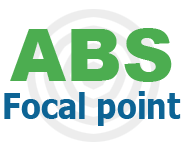
category_news
Large-scale screening and the EU ABS Regulation
For some research projects, large numbers of genetic resources are screened to determine whether or not they fit the purposes of the project. In some cases, this large-scale screening activity is not in scope of the EU ABS Regulation.
What is large-scale screening?
In the initial phases of a research project, a company or researcher may carry out large-scale screening: the evaluation of usually large numbers of genetic resource samples against a specific criterion. Simply put, the objective of this activity is to screen out the vast majority of samples which are not of interest to the research project and to identify the few samples suitable for further research within the project.
Large-scale screening by itself, which is based on simple binary questions and resolved by identical tests performed on multiple samples in a standardised way in order to screen out the majority of them, would not fall in scope of the EU ABS Regulation (Regulation (EU) 511/2014). Since it is considered that no added scientific insight in relation to the screened-out samples is created, it does not amount to utilisation (‘research and development on the genetic and/or biochemical composition of genetic resources’) in the context of the EU ABS Regulation.
From screening to utilisation
When, however, a researcher starts to look in more depth into the genetic resources which have been identified for further study by the binary process, such activity could fall within the scope of the EU ABS Regulation. Such further research moves beyond the application of standardised binary questions and follows a more individualised testing regime.
At that point, the research activity is no longer focused on screening out a large number of samples but is concentrated on identifying the qualities and properties of those genetic resources which have been selected. Given that such research creates additional knowledge and new insight into the genetic and/or biochemical composition of those genetic resources, it amounts to utilisation, and so falls within scope of the EU ABS Regulation.
When a researcher starts to look at genetic resources more in depth, this step can be regarded as the first step in a research and development chain. The distinction between screening activities and more in-depth analysis may not always be clear-cut. It is recommended to identify the end of screening activities and the beginning of any subsequent research activities, and keep records of this, as part of the user’s due diligence obligations, for potential checks by the competent authorities.
Examples
Microorganisms are screened to check which ones contain alpha-amylases. The process will only provide information that alpha-amylase is present in some microorganisms and enables the exclusion of microorganisms without alpha-amylase from further examination and analysis. It does not provide information on how such amylase performs in the baking process. This activity is considered screening and out of scope of the EU ABS Regulation.
Microorganisms in which alpha-amylase has been detected are studied for their value in baking, by testing the performance of the candidate alpha-amylases under real-life conditions in baking applications and their stability. Such activities examine the biochemical composition and activity of a derivative extracted from a genetic resource in detail, are considered to be utilisation and are therefore within scope of the EU ABS Regulation.
More detailed information on large-scale screening is available in section 6.5 of Annex II of the EU Guidance.
As always, it is important to realise that a provider country may have national access legislation that differs from the EU interpretation of the Nagoya Protocol. This means that activities or resources which are not in scope of the EU ABS Regulation may be in scope of national access legislation of the provider country.
